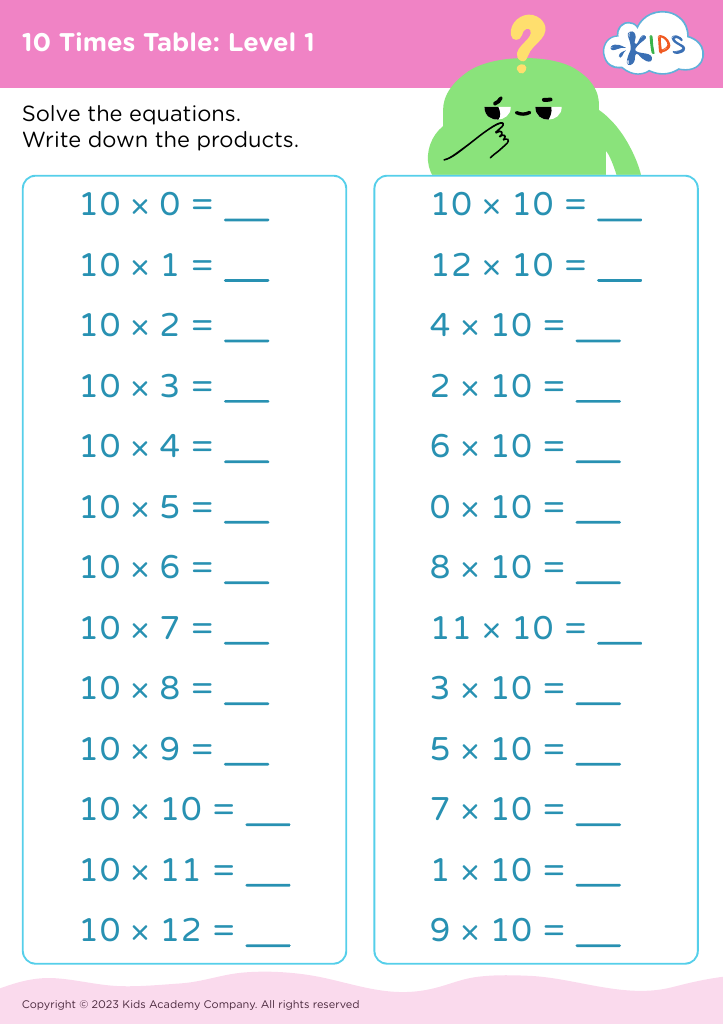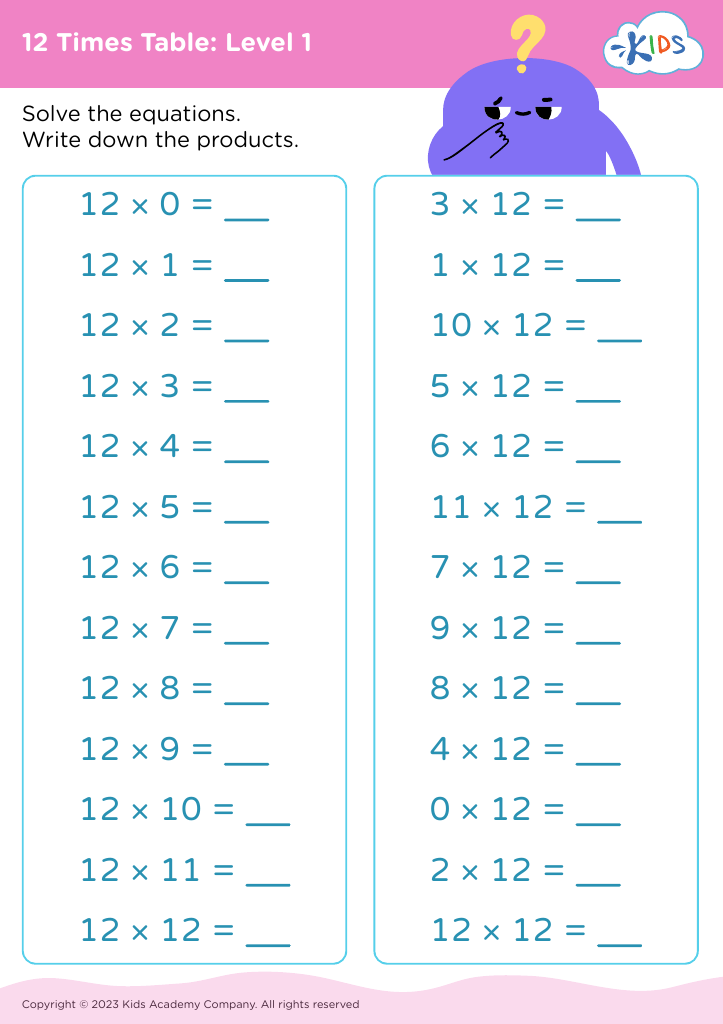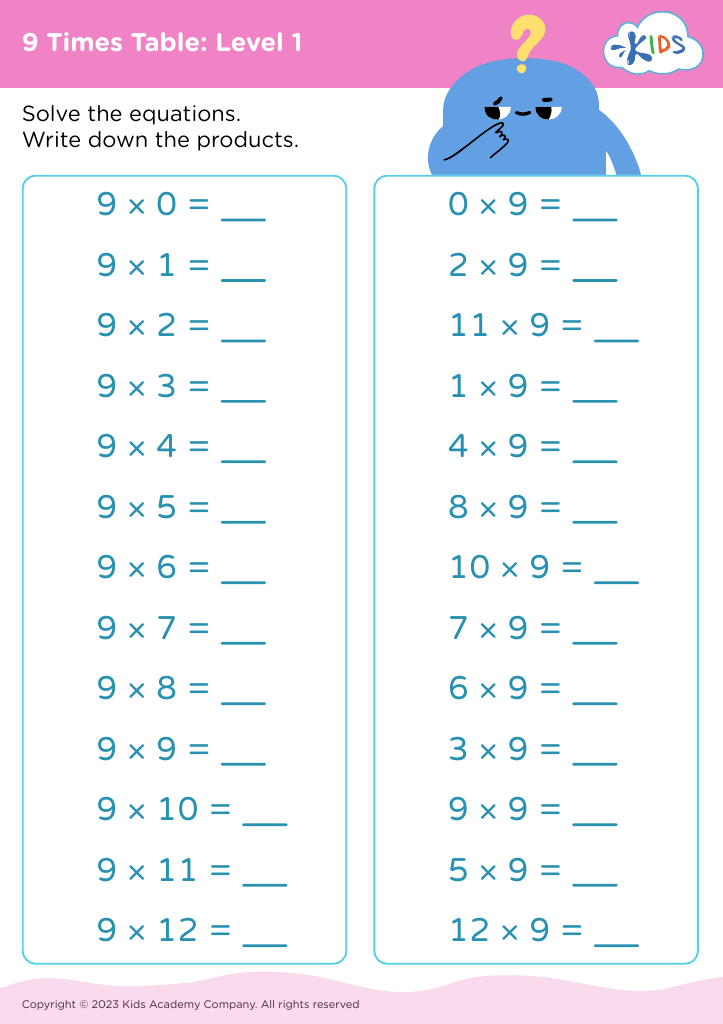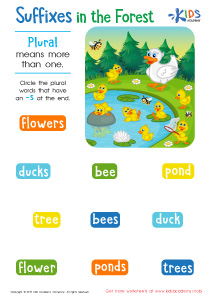Understanding patterns Easy Basic Times Tables up to 12 Worksheets for 8-Year-Olds
3 filtered results
-
From - To
Unlock the world of mathematics for your 8-year-old with our "Understanding Patterns: Easy Basic Times Tables up to 12 Worksheets." Designed to enhance fundamental math skills, these engaging worksheets promote a clear understanding of patterns and relationships within multiplication. Students will explore visual aids and structured exercises, enabling them to recognize repetition and consistency in times tables, from 1 to 12. This resource not only boosts confidence in their math abilities but also fosters critical thinking and problem-solving skills. Download these worksheets today to make learning multiplication fun and effective for your child! Equip them for success in their mathematical journey!
Understanding patterns in basic times tables up to 12 is essential for 8-year-olds, providing them with a solid foundation for future mathematical concepts. At this age, children are developing critical thinking skills and learning to recognize relationships between numbers, which are crucial in mathematics. Mastering the times tables not only boosts their confidence, but also enhances their ability to solve problems quickly and accurately.
When students grasp the patterns in multiplication—such as knowing that 4 times 3 equals 3 times 4—they become more efficient learners and can apply this understanding across different mathematical areas, including division and fractions. Recognizing these patterns also makes learning more engaging, as children can start to identify shortcuts and make connections to real-life scenarios, such as grouping items or calculating totals.
Moreover, a strong grasp of times tables contributes to better performance in school, paving the way for success in more advanced math topics later on. For teachers and parents, fostering this skill means providing support for their children's learning journey, ultimately equipping them with tools that are essential for academic achievement and critical thinking. Investing time and resources in understanding these patterns benefits not just individual performance, but applies to overall educational growth.













